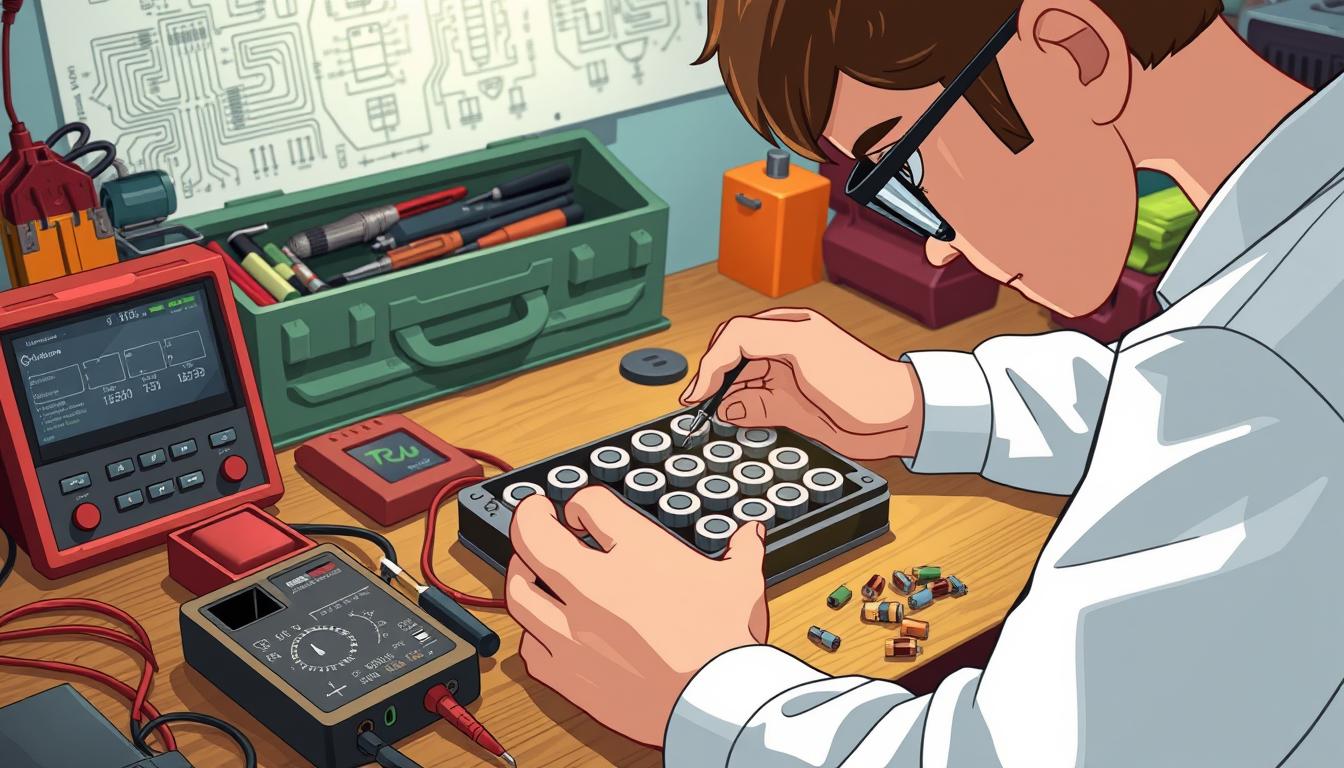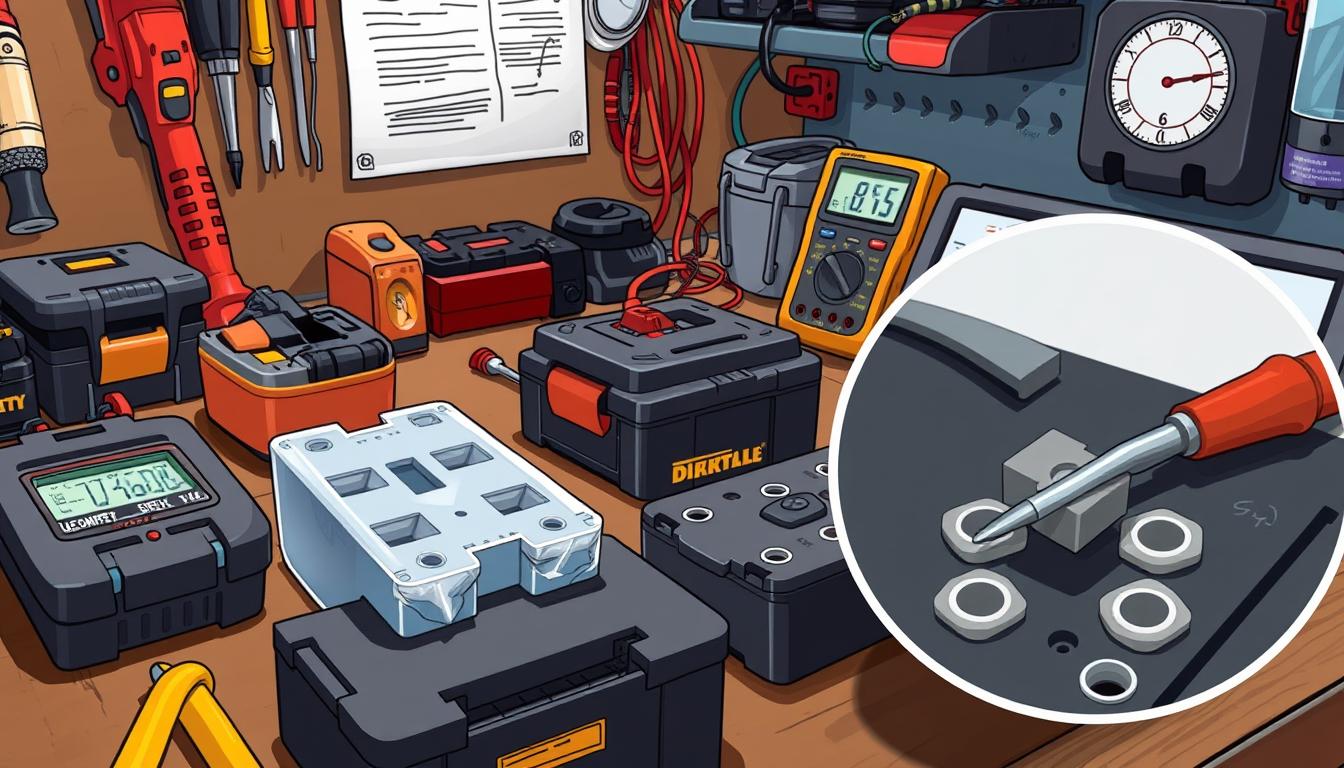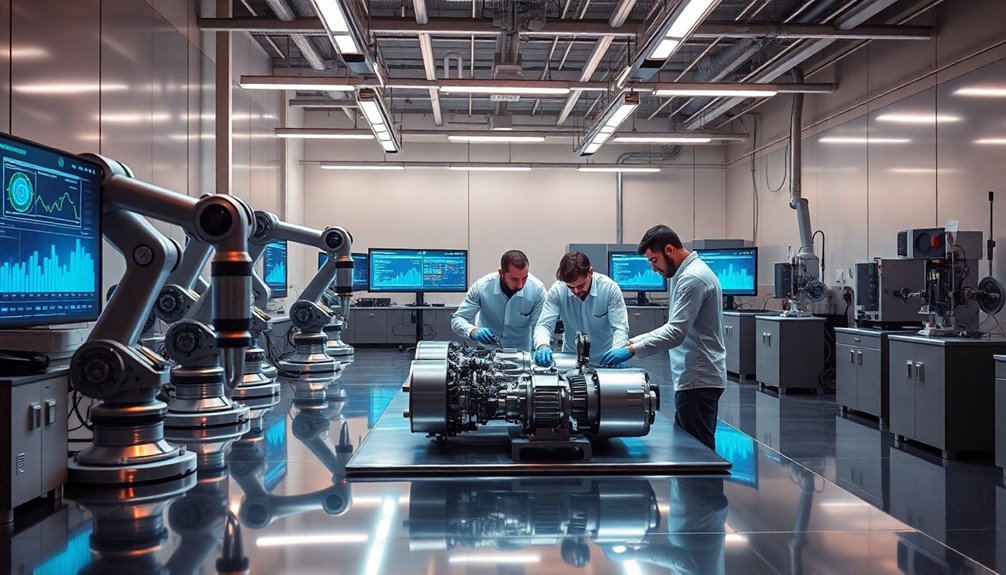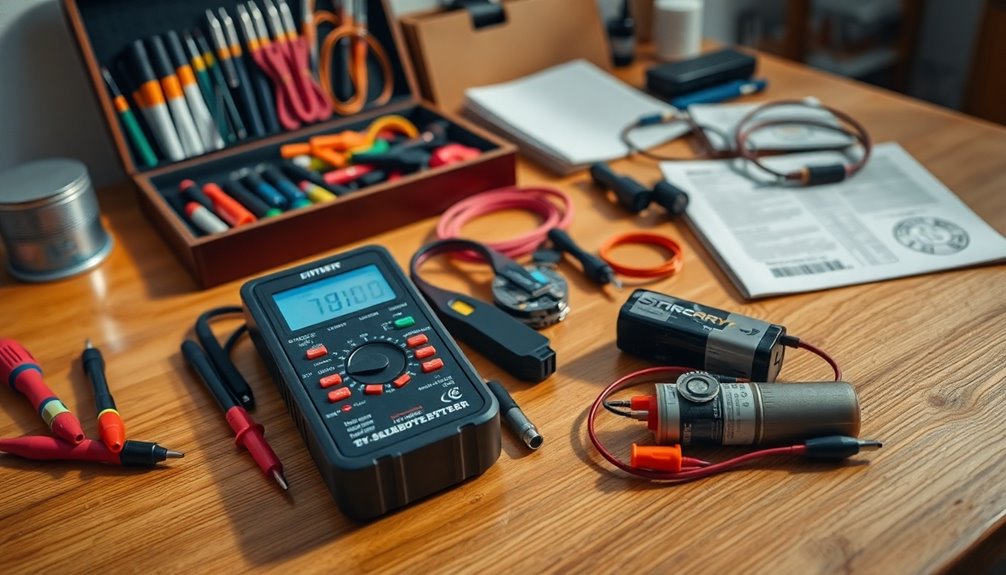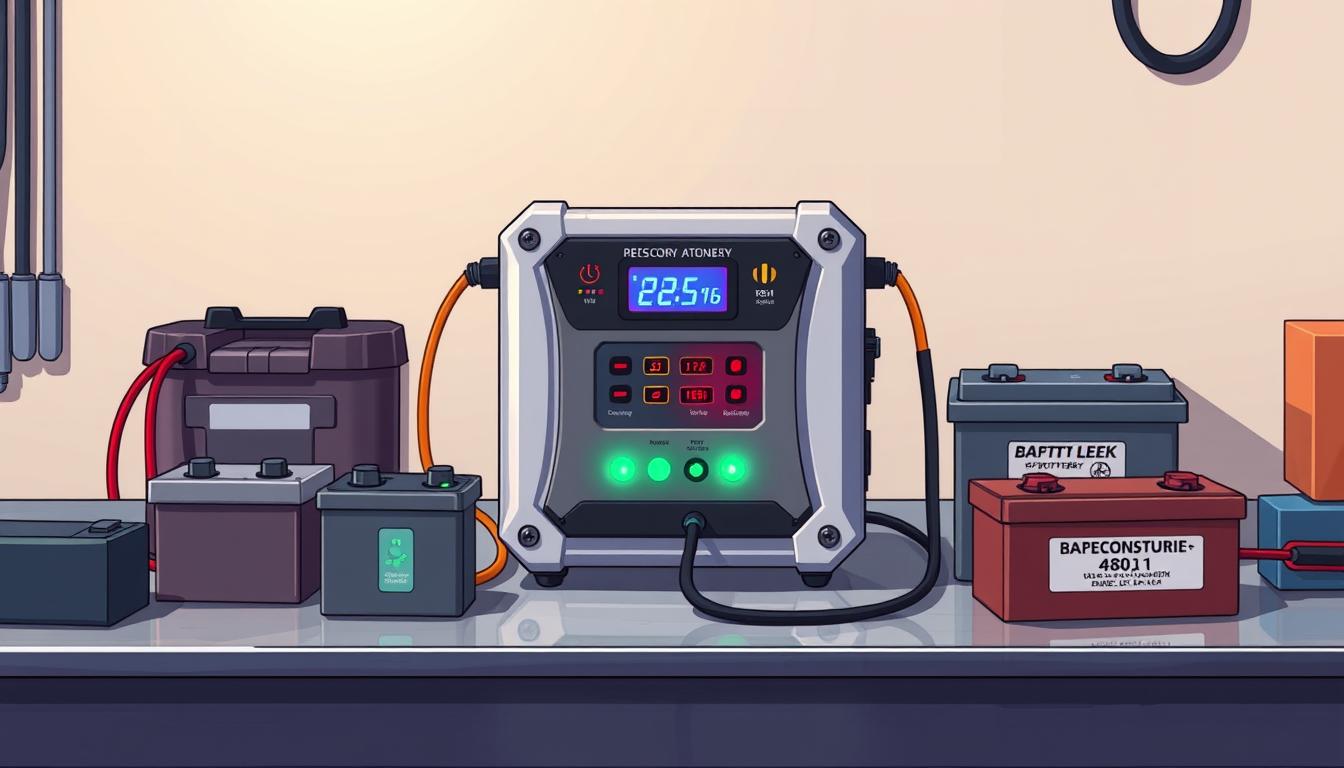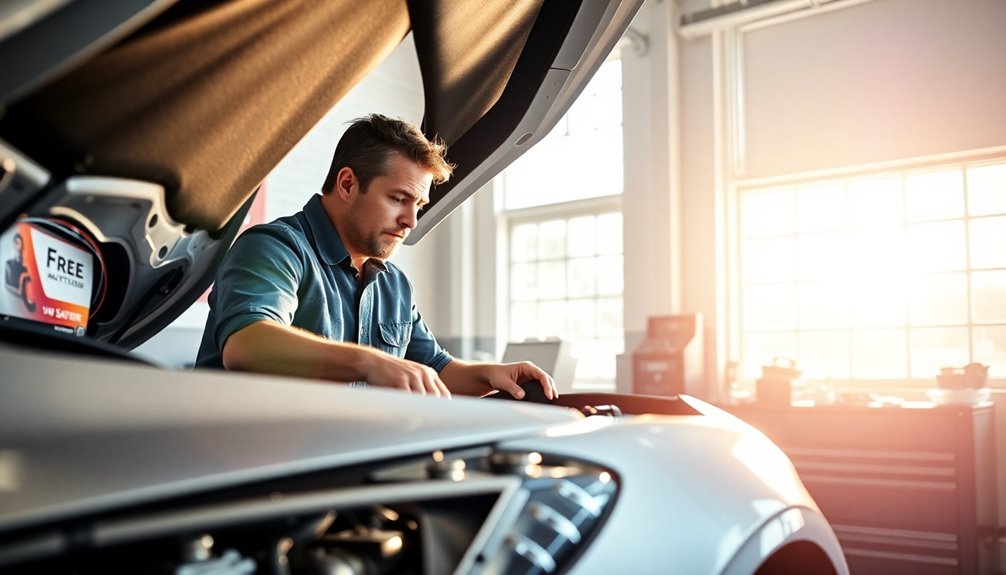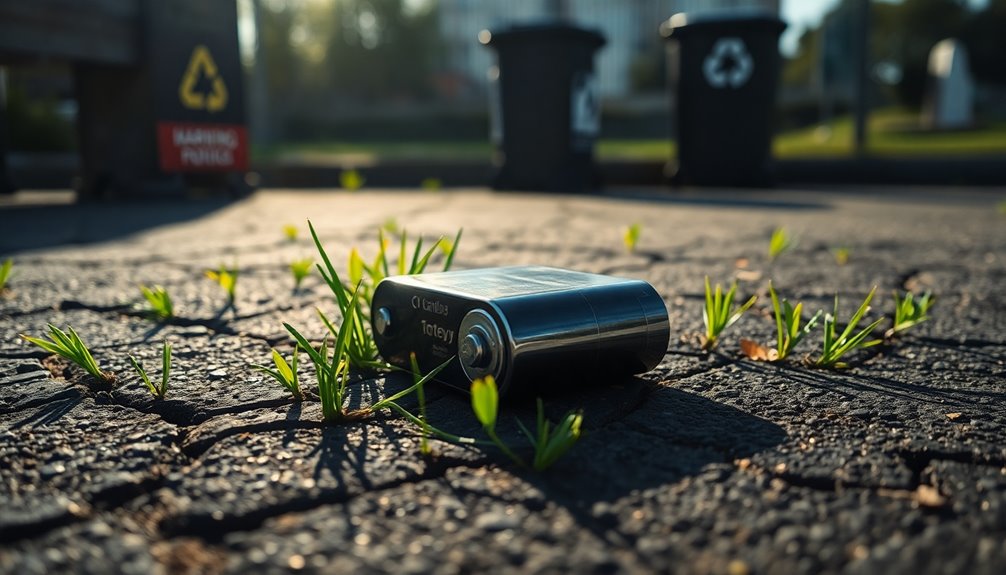Did you know that nearly 30% of rechargeable batteries end up in landfills each year, despite the fact that many can be easily reconditioned to restore their functionality1? This guide aims to teach you how to recondition NiMH batteries, empowering you with the knowledge to revive dead NiMH batteries, extend their lifespan, and make eco-friendly choices that benefit both your wallet and the planet2. Understanding your batteries’ needs is crucial since a well-cared-for battery can save you significant costs over time, reduce waste, and improve performance2. By following this easy reconditioning guide, you can take control of your electronics and ensure that your NiMH batteries are always ready to deliver.
Key Takeaways
- Nearly 30% of rechargeable batteries are discarded, many of which can be reconditioned.
- Reconditioning NiMH batteries is both cost-effective and eco-friendly.
- Signs your battery needs reconditioning include reduced runtime and overheating.
- Essential tools for the process include a multimeter and a smart battery charger.
- Proper reconditioning can significantly extend battery life.
Understanding NiMH Batteries
NiMH batteries have become popular for a wide range of applications due to their efficiency and safety compared to older technologies like nickel-cadmium (NiCd). They are designed using nickel oxide-hydroxide for the positive electrode and a hydrogen-absorbing alloy for the negative electrode, with a nominal voltage of 1.2V. This technology emerged in the early 1990s and offered the advantage of being memory-free, unlike NiCd batteries, which experienced significant memory issues due to cyclic memory. Although NiMH batteries are less prone to memory formation, they can still develop some signs of battery failure if not properly maintained or if they remain on the charger for too long3.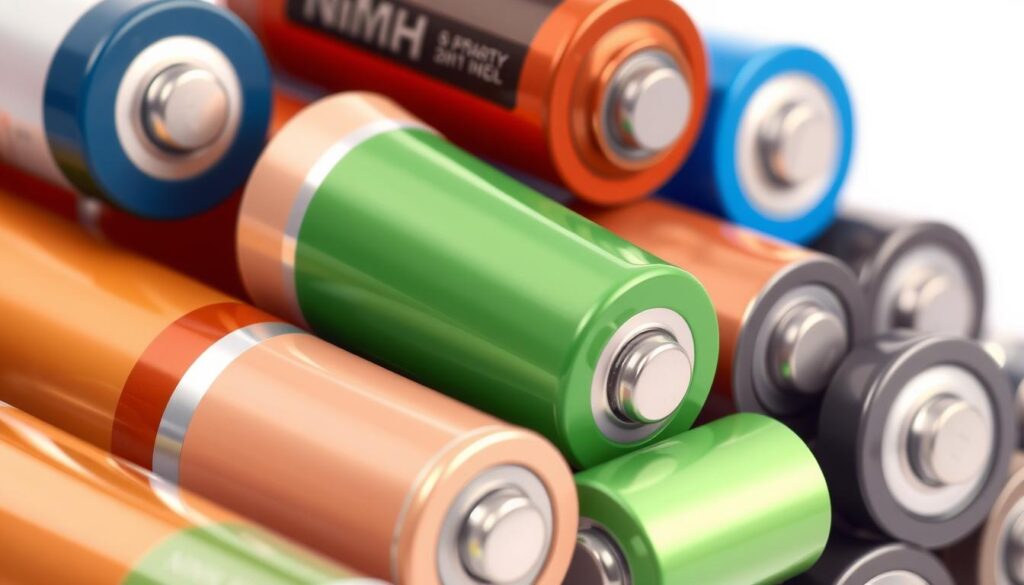
What Are NiMH Batteries?
NiMH batteries are rechargeable cells that capitalize on electrochemical reactions to store energy. They provide a reliable power source, allowing multiple recharge cycles—up to 1000 times for lower-capacity batteries and about 500 times for higher-capacity ones4. Recommended for devices with high energy demands, they excel in applications such as digital cameras, flashlights, and toys. Their ability to self-discharge only about 1% per day makes them an efficient choice, with an effective lifespan in low-energy-consuming devices of approximately 90 days4.
Common Applications of NiMH Batteries
The common applications of NiMH batteries span various sectors. They are widely utilized in consumer electronics, including:
- Digital cameras
- Flashlights
- Toys
- Power tools
- Electric vehicles
These applications benefit from the high energy capacity and environmental advantages of NiMH batteries, particularly the reduced risk of harmful memory effects associated with cadmium-containing alternatives4.
Signs Your NiMH Battery Needs Reconditioning
Recognizing the signs of battery failure is vital to maintaining optimal performance. Common symptoms include:
- Decreased runtime
- Rapid self-discharge
- Inconsistent charging
- Physical swelling
- Overheating during charge cycles
If you notice any of these signs, consider reconditioning your NiMH battery to revitalize its function. Regular maintenance, like periodic complete discharges and controlled recharge cycles, can effectively stave off these issues and extend your battery’s lifespan5.
Tools and Materials Needed
To successfully recondition your NiMH batteries, you need to have the right tools and materials on hand. Using the appropriate equipment will make the process easier and more efficient, ensuring safety and effectiveness throughout. Below are the essential tools and safety gear you shouldn’t overlook.
Essential Tools for Reconditioning
You need specific tools for reconditioning nimh batteries that guarantee a successful outcome. Here are some must-have tools:
- Voltmeter for voltage checks
- Connecting cables to bridge batteries
- Smart charge controller for effective charging
- Battery cleaning brushes for maintenance
- Screwdrivers for opening battery housing
Safety Gear You Shouldn’t Skip
When working with batteries, the right safety gear for battery work is crucial to protect against hazards. Make sure to include:
- Safety goggles to shield your eyes
- Heavy-duty gloves to protect your hands
- Face masks to prevent inhaling fumes
- Fire extinguisher nearby for emergencies
Recognizing potential risks and donning the proper protective gear will make your reconditioning project much safer.
Recommended Battery Tester
Choosing the best battery tester is essential for assessing battery health. A quality tester will not only check voltage but also provide insights into the battery’s overall condition. Here’s a quick comparison:
| Tester Model | Functionality | Price |
|---|---|---|
| Model A | Basic voltage check | $20 |
| Model B | Comprehensive battery analysis | $35 |
| Model C | Smart testing with temperature compensation | $50 |
Using a reliable battery tester can help you identify cells that need replacement. Choosing wisely can save you time and improve your success rate in reconditioning.
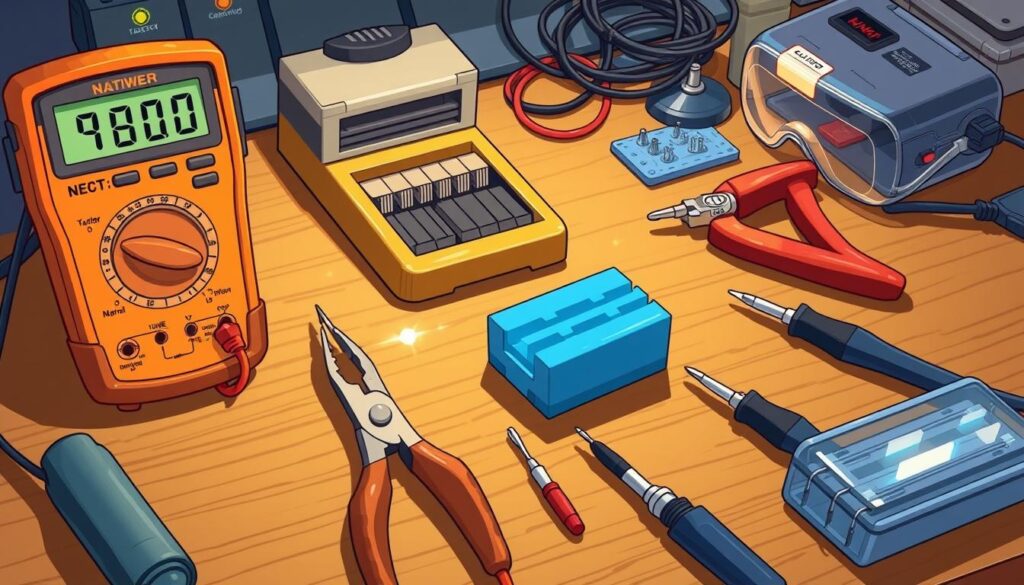
Step-by-Step Reconditioning Process
Reconditioning your NiMH batteries requires a careful, step-by-step approach. Each stage plays a vital role in ensuring that your battery can be revived to its optimal performance levels. Let’s break down these steps for successful reconditioning.
Step 1: Discharge the Battery
Start with discharging your NiMH battery. To safely accomplish this, use a resistive load such as a 60W bulb to draw power from the battery until it can no longer deliver energy effectively. This method of discharging NiMH batteries is essential as it establishes a baseline for the reconditioning process.
Step 2: Clean the Battery Contacts
Once the battery is completely discharged, inspect the contacts. Dirty or corroded contacts can hinder performance. Use a soft cloth or a cotton swab dipped in isopropyl alcohol to clean the terminals thoroughly. This simple action can significantly enhance the battery’s ability to charge and discharge properly.
Step 3: Charge the Battery
Next, apply the charging tips for NiMH batteries by using a smart charger designed to handle low-voltage batteries. The EBL Smart Battery Charger is a recommended option, especially for reviving batteries that have dropped to 0V. For optimal results, ensure the battery charges for the prescribed time, typically 3-5 charge cycles to regain full functionality. Remember, avoiding charging at temperatures over 40°C is crucial, as it can significantly reduce charge acceptance6. By following this step-by-step NiMH battery reconditioning process, you’ll maximize the battery’s longevity and performance.
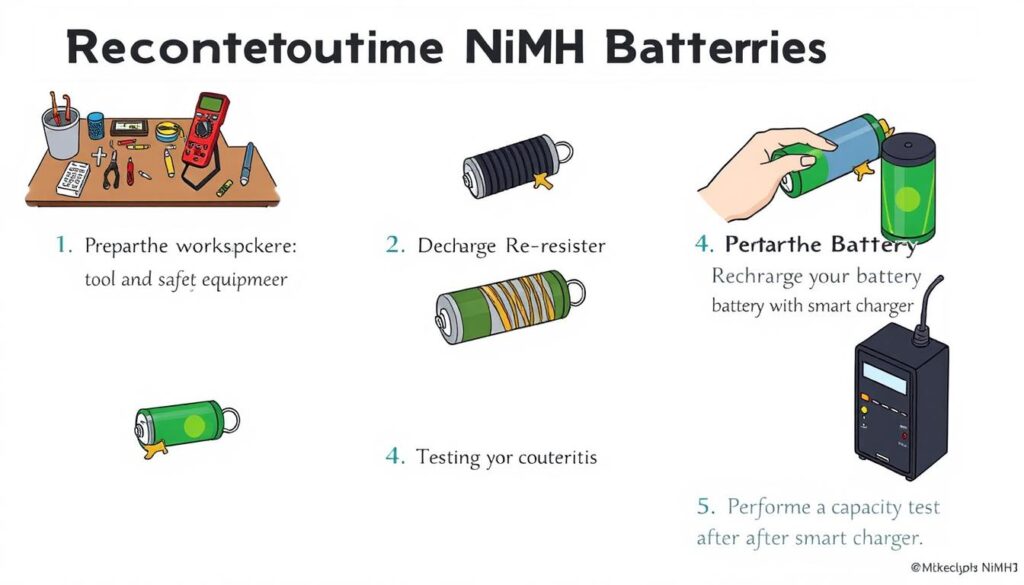
| Step | Description | Important Tips |
|---|---|---|
| 1 | Discharge the battery using a resistive load. | Use a 60W bulb for safety. |
| 2 | Clean battery contacts. | Utilize isopropyl alcohol for cleaning. |
| 3 | Charge the battery with a smart charger. | Avoid high temperatures during charging. |
Pay attention to these steps and tips to ensure your reconditioning efforts yield the best results7.
Testing and Monitoring
After successfully reconditioning your NiMH batteries, it’s essential to carry out effective testing and monitoring to ensure optimal performance. Bookmark this guide for a seamless transition from reconditioning to active use.
How to Test the Reconditioned Battery
Begin the testing process by measuring the voltage of your reconditioned battery using a reliable voltmeter. Comparing this reading to previous measurements can reveal the effectiveness of your reconditioning efforts. It’s crucial to note that the recommended testing temperature range for battery capacity measurement lies between 18 degrees C and 25 degrees C8. This ensures that you receive accurate results. For AA battery sizes, the rated capacity is typically around 600mAh. Following this, discharging the battery under specific conditions can yield better insights about its performance and longevity.
Monitoring Battery Performance
Monitoring battery performance involves regularly checking the battery voltage and capacity. Utilizing advanced chargers can offer better capacity gains than basic models. For example, an advanced charger can achieve about a 6 percent increase in capacity over a simpler alternative9. Maintain awareness of your battery’s charging cycles; aggressive chargers can exhaust a battery pack after approximately 300 cycles, rather than the expected 350–4009. Establishing these practices will help in preventing common issues, such as capacity reduction and premature battery failure.
What to Do If Reconditioning Fails
If you encounter issues while testing reconditioned NiMH batteries, troubleshooting battery issues becomes essential. Problems may arise from overcharging; unlike NiCd batteries that can tolerate a trickle charge of about 0.1C, NiMH batteries should ideally be set around 0.05C9. If your battery exhibits poor capacity even after reconditioning, consider reassessing the charging temperature and methods used during reconditioning. Avoid charging the batteries when too hot or at freezing temperatures to ensure they are maintained within suitable conditions9.
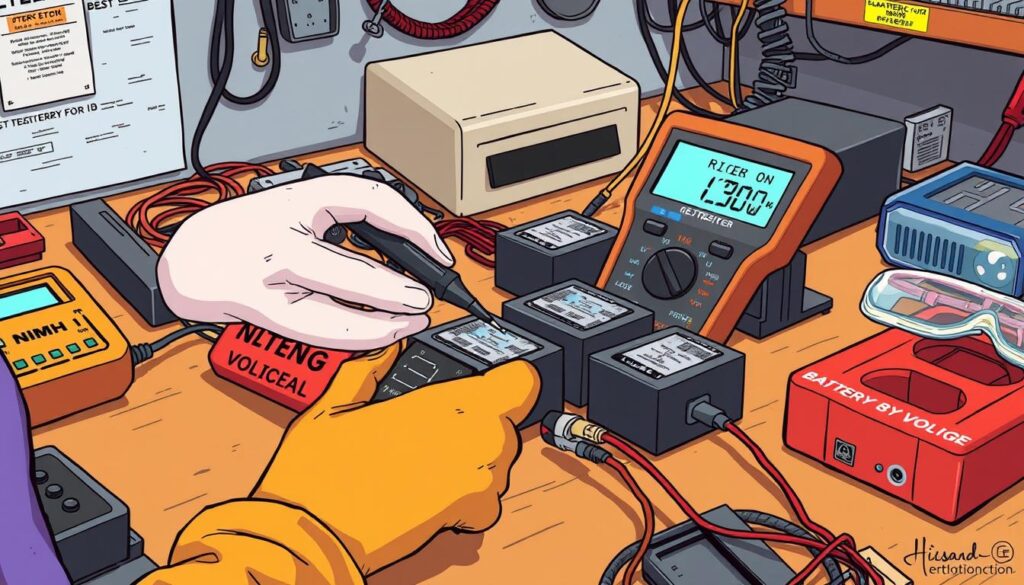
| Test Parameter | Recommended Value |
|---|---|
| Rated capacity (AA) | 600mAh |
| Charging rate for capacity tests | C/10 |
| Cut-off voltage (C/5 discharge) | 1.05V/cell |
| Cut-off voltage (C rate discharge) | 0.9V/cell |
Implementing effective testing and monitoring will significantly enhance the lifetime and performance of your reconditioned NiMH batteries, ensuring reliable energy sources for all your devices89.
Tips for Maintaining Your NiMH Batteries
Taking care of your NiMH batteries can significantly extend their life and performance. By implementing proper practices for storage, charging, and knowing when to replace them, you can ensure that your batteries remain reliable for years to come.
Best Practices for Battery Storage
To prolong the lifespan of your NiMH batteries, consider battery storage practices such as keeping them in a cool, dry place. Ideally, store your batteries at a temperature range of -20°C to +45°C, ensuring they are partially charged (around 40-60%) during storage to prevent overcharging or complete discharging, which can adversely affect their performance1011.
Charging Tips to Extend Battery Life
When charging your NiMH batteries, follow helpful charging tips for longer battery life. Avoid charging them at temperatures above 40°C, as this can reduce charge acceptance and speed up aging10. Additionally, try to avoid frequent overcharging, which is crucial to maintaining battery health.
When to Consider Replacement
Most NiMH batteries can provide reliable service for 2-3 years with regular use11. However, if you notice a drastic drop in performance, such as a significant self-discharge rate or failure to hold a charge, it may be time to consider replacing your batteries. By keeping track of your battery’s health and adhering to these nimh battery maintenance tips, you can make informed decisions.
FAQ
How do I start the reconditioning process for my NiMH batteries?
Can I recondition any kind of battery?
What safety precautions should I take when reconditioning batteries?
How can I tell if the reconditioning was successful?
What should I do if my NiMH battery still doesn’t perform well after reconditioning?
How can I extend the lifespan of my NiMH batteries?
Are there any signs that I need to recondition my NiMH batteries?
What tools do I need to recondition my NiMH batteries?
Can I safely recondition NiMH batteries at home?
What are the common applications of NiMH batteries?
Source Links
- https://www.eblofficial.com/blogs/blog/how-to-revive-nimh-battery?srsltid=AfmBOoogdGNh3_dDu6DbnyNZ8IhoC6bnUnKBqmgl3ci6SEariuGzhbEw – How to Bring Back 0V/low voltage NiMH Battery to Life
- https://www.ufinebattery.com/blog/battery-reconditioning-explained-a-comprehensive-guide/ – What You Should Know About Battery Reconditioning
- https://batteryuniversity.com/article/bu-807-how-to-restore-nickel-based-batteries – BU-807: How to Restore Nickel-based Batteries
- https://www.batterystuff.com/kb/articles/battery-articles/proper-care-and-feeding-of-a-nimh-battery.html?srsltid=AfmBOor2zoGCrxnv5aNYRpiFUf1oKAHpjsONXByPDFvcsBsrPYvdT4Gl – Proper Care and Feeding: NiMH Battery FAQs
- https://www.eblofficial.com/blogs/blog/how-to-revive-nimh-battery?srsltid=AfmBOooTDYHDHyssbp8KvCYgi0STIKkHtObWWyN3-etzI7PE91cGW0qP – How to Bring Back 0V/low voltage NiMH Battery to Life
- https://www.eblofficial.com/blogs/blog/how-to-revive-nimh-battery – How to Bring Back 0V/low voltage NiMH Battery to Life
- https://www.linkedin.com/pulse/how-recondition-nimh-tool-batteries-drillbattery-comau – How to Recondition NiMH Tool Batteries
- https://www.ebme.co.uk/articles/maintenance/testing-nicd-and-nimh-batteries – Testing NiCd and NiMH Batteries
- https://batteryuniversity.com/article/bu-408-charging-nickel-metal-hydride – BU-408: Charging Nickel-metal-hydride
- https://www.eblofficial.com/blogs/blog/how-to-revive-nimh-battery?srsltid=AfmBOoqtTxQ-_sxtxLlDmxL2T0IN9tWkczUWcfI9mjaMWX2zrtiBYyTY – How to Bring Back 0V/low voltage NiMH Battery to Life
- https://www.weijiangpower.com/news/nimh-battery-maintaining-faq – NiMH Battery Maintaining & FAQ

